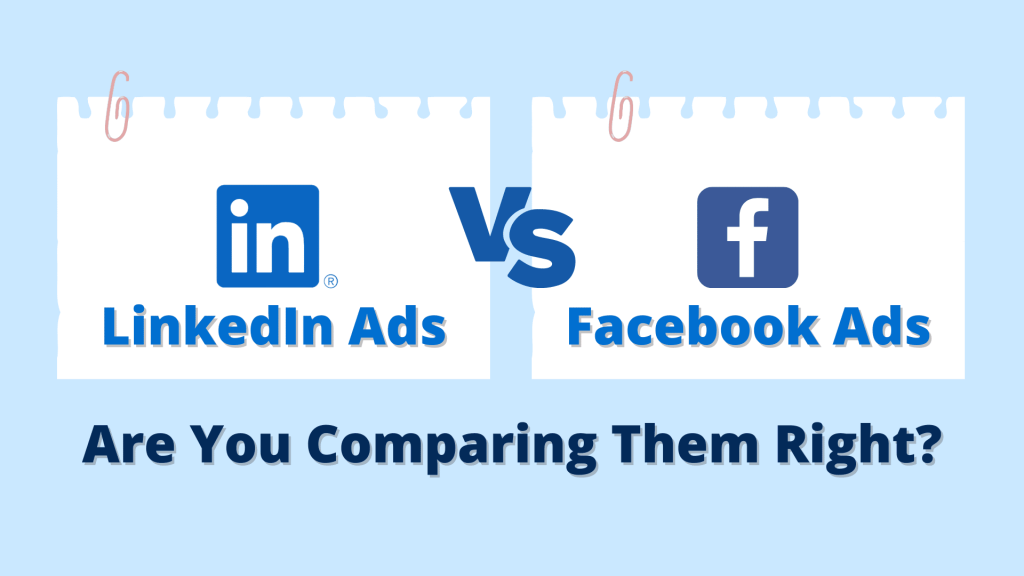When it comes to B2B digital advertising, choosing between LinkedIn Ads and Facebook Ads can be a strategic decision with long-term implications. Both platforms offer powerful targeting features and access to millions of users.
However, each excels in different areas. Businesses looking to elevate their B2B marketing must evaluate which platform aligns best with their goals, audience, and budget. Take a closer look at what works best for your brand by visiting https://stormedigital.com/.

1. Audience Targeting Capabilities
LinkedIn is known for its precision in targeting professionals based on job titles, industries, company size, seniority, and more. This makes it an ideal platform for B2B brands aiming to reach decision-makers, executives, and professionals in specific sectors.
Facebook also offers advanced targeting, including demographics, interests, and behaviors. However, its strength lies in broader consumer targeting. While Facebook provides options for job titles and industries, the data is less detailed and sometimes user-generated, which may reduce targeting accuracy for B2B campaigns.
2. Cost Per Click and ROI Considerations
LinkedIn Ads generally have a higher cost per click (CPC) than Facebook Ads. This is because LinkedIn delivers premium business audiences who are typically harder to reach.
While Facebook Ads are more budget-friendly, the cost advantage may not always translate into higher returns for B2B advertisers. LinkedIn’s higher CPC can be offset by stronger lead quality and conversion rates in professional segments.
3. Ad Formats and Creative Opportunities
Facebook provides a wide range of ad formats, including carousel ads, video ads, stories, and interactive experiences. This diversity allows brands to run creative and engaging campaigns that can resonate emotionally.
LinkedIn offers a more focused set of formats such as sponsored content, InMail, and lead gen forms. These are tailored for B2B engagement, especially when the goal is to capture qualified leads or promote whitepapers, webinars, or case studies.
4. Platform Intent and User Behavior
The intent behind platform usage matters. Users on LinkedIn are typically in a professional mindset, seeking career growth, networking, and industry insights. This makes it an effective platform for promoting B2B services, thought leadership content, and high-ticket offerings.
On the other hand, Facebook users are often in a leisure mindset, browsing for entertainment or personal updates. While this can lead to broader exposure, it may require more creative storytelling to spark interest in B2B offerings.
5. Lead Generation and Funnel Placement
LinkedIn excels in top- and mid-funnel B2B marketing. Lead generation forms are integrated into ads, making it easier to capture professional contact information directly on the platform.
Facebook can support lead generation too, especially with custom landing pages and integrated lead forms. However, it is often more effective for nurturing leads through remarketing, given the lower upfront intent.
Want to drive real B2B results? Collaborate with a top Facebook promotion company in Gurugram to run precision-targeted campaigns that convert.

6. Analytics and Conversion Tracking
Both platforms offer strong analytics dashboards and conversion tracking tools. LinkedIn’s Campaign Manager helps advertisers monitor performance by metrics like job function, company industry, and seniority.
Facebook’s Ads Manager offers deeper customization, pixel-based tracking, and performance insights. While both platforms require setup for full tracking, Facebook has a slight edge in real-time analytics and A/B testing capabilities.
7. Brand Awareness and Reach Potential
Facebook, with its massive global user base, allows businesses to reach a wider audience. It is ideal for creating broad awareness at a lower cost.
LinkedIn’s audience is smaller but more niche. If the goal is to build authority within a specific professional community, LinkedIn offers unmatched value.
8. Case Study Example: Which Platform Won?
Consider a SaaS company that ran parallel campaigns on both platforms targeting enterprise decision-makers. The LinkedIn campaign delivered fewer leads but a 40% higher conversion rate. Facebook generated more traffic, but LinkedIn brought in higher-quality leads.
This example shows that while volume might favor Facebook, lead quality and conversion often go to LinkedIn. To understand this comparison in greater depth, take the next step.

9. Scalability and Long-Term Strategy
Facebook is better suited for testing and scaling ads quickly due to its flexible budget controls and broader reach. Brands looking to scale campaigns rapidly may find Facebook more agile.
LinkedIn may require higher investment per click, but it builds credibility and positions brands in front of key industry players. This long-term brand value is essential for B2B companies with complex buying cycles.
10. Which Platform Should You Choose?
If your product or service targets C-level professionals, niche industries, or enterprise clients, LinkedIn is the better option. It offers tools and audiences tailored for B2B success.
However, if your B2B brand targets small businesses, and independent professionals, or seeks wider brand awareness, Facebook can be highly effective, especially with strategic retargeting and storytelling.
Conclusion
There is no one-size-fits-all answer. The choice between LinkedIn and Facebook for B2B depends on your goals, target audience, and ad strategy. In many cases, a hybrid approach that leverages both platforms can deliver the best results.
Want expert help to decide what works best for your brand? Book a free marketing call to unlock insights tailored to your business.